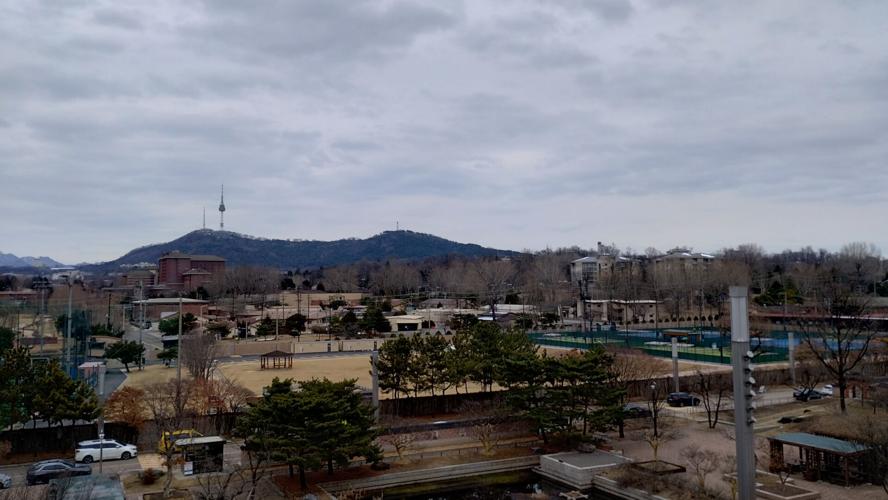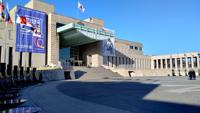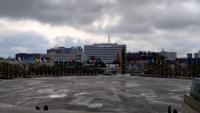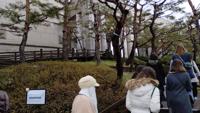Serena, a staff writer at the Ram Page, is currently abroad in Seoul, South Korea as part of the student exchange program to experience a new lifestyle. This is part of a biweekly journal of her experiences while overseas. Enjoy!
With a group of 17 fellow exchange students, I visited Seoul’s National History Museum. It was my first time taking a subway, and the subway was completely filled with people. Everyone was bunched up next to each other. The force of the subway caused me and many others to lose balance, and it felt rude to accidentally bump into people.
From the outside of the National History Museum, you can see the N Seoul Tower.

The museum itself was so large that I spent four hours there and still only saw half of the building. The museum’s exhibits were organized by era and key events in Korean history, and the Mesopotamian exhibit was especially notable in its depth. The museum also had a garden outside the main complex, and is very close to the National Palace Museum of Korea and multiple convenience stores. It is easily accessible using public transportation.

Everyone visiting the museum was respectful of others while exploring the exhibit, and the staff helped me find things as needed. Some visitors explored Korea’s history in depth, reading every sign and viewing every relic, while others preferred to take pictures to post on social media as souvenirs or study materials. Especially notable were the parents and guardians traveling with their children, taking pictures of their children in front of fascinating artifacts and explaining each exhibition.
On my way back, I got a bit lost, but I eventually figured out how to read the signs and maps posted throughout the subway station and began looking for specific stops. Each subway train moves in a certain direction past certain stops, and every subway station is split into two sides depending on the direction each train is traveling. Each station has different exits that you take depending on which side of the street you want to traverse on foot.
Seoul has many museums of comparable size to the National History Museum, and Seoul’s war museum in particular is also detailed and well-organized. I visited the National War Museum twice with my friends. One of my friends is majoring in Korean history, specializing in international relations with North Korea. Throughout our visit, she explained the politics and economics behind key historical border incidents and undercover missions to us.

The National War Museum featured a lot of memorials and included a significant amount of English text so that everyone could understand the concepts and topics that the curators deemed significant. Locals enjoyed taking strolls around the area of the war museum, with many bringing their children along with them to learn, move around and take in the outside air. Since I visited around Independence Movement Day – not Independence Day, that’s a separate holiday – I was accompanied by many small primary school tours and families. The details of independence activist Kim Sangohk’s life that curators managed to locate were impressive.
The war museum had a stronger nautical element to its lineup, focusing on turtle boats in maritime warfare. Children especially took to the projected short movies in various miniature theaters in the museum, and the museum had a vast array of old weapons, recreations and dioramas. The war museum also included exhibits relating to the impact of other countries and the United Nations on Korean history.
Both the National War Museum and the National History Museum had strong exhibits featuring the Joseon era of Korean history, and both included exhibits showcasing global affairs. The national museum’s exhibit on Japan was especially strong, showing off so many items in a relatively small space. Setdressing was excellent in both locations as well, and both strived to include hands-on and 3D elements in their exhibits. The war museum’s location also lends itself well for picking up a meal afterward, being located near busy streets with ample open hours.

Seoul has around 20 large museums, each focusing on a different historical theme. I learned a lot from seeing the relics, watching the videos and reading the presentations. Some of the language used in certain exhibits was either rough translations or gave the air of being selective, sort of propaganda-like, but most seemed to be simply informational or relatively neutral.
If you decide to visit these museums in a group, I’d recommend ensuring that your companions will take just as much time as you when viewing each exhibit. Whether you desire to move at a fast or slow pace, both of your paces need to be compatible. Your intentions need to match too, so that you work toward the same goal. Do you both want to analyze each exhibit in-depth or simply sightsee?











(0) comments
Welcome to the discussion.
Log In
Keep it Clean. Please avoid obscene, vulgar, lewd, racist or sexually-oriented language.
PLEASE TURN OFF YOUR CAPS LOCK.
Don't Threaten. Threats of harming another person will not be tolerated.
Be Truthful. Don't knowingly lie about anyone or anything.
Be Nice. No racism, sexism or any sort of -ism that is degrading to another person.
Be Proactive. Use the 'Report' link on each comment to let us know of abusive posts.
Share with Us. We'd love to hear eyewitness accounts, the history behind an article.
Any infractions against the above rules will result in comments not being published.